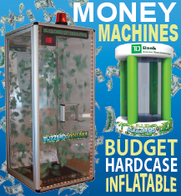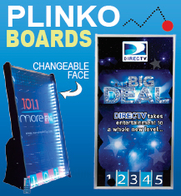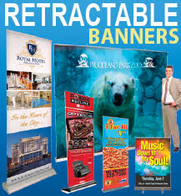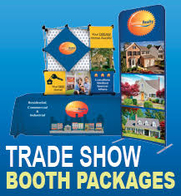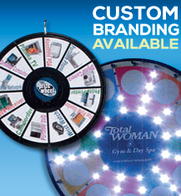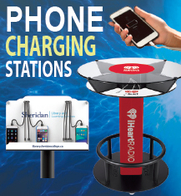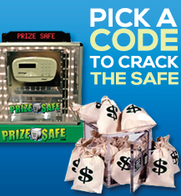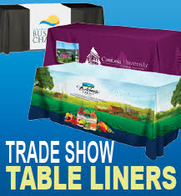 Background
Background
The economic collapse of 2008 left no industry unscathed, but among the hardest hit was the U.S. automotive industry. The Big Three automakers saw sales and revenues fall off dramatically, while companies that supply the industry shared their pain. Among them is German conglomerate the Bosch Group, a manufacturer of consumer and commercial goods and industrial technology, which operates an extensive auto parts business worldwide.
With the forecast for U.S. auto sales declining, the leadership of Bosch US decided to take a cautious approach to budgets for 2009, including cuts to its U.S. trade show expenses.
Cost-Cutting Strategies
To address the budget cuts, Scott Jameson, Manager of Tradeshows and Events for Bosch US, has been working with The Tradeshow Network Marketing Group and his other trade show vendors to find creative ways to cut expenses without undercutting Bosch’s strong competitive position in the market.
While still in the process of reconfiguring his budget in January, he settled on the following strategies for 2009.
- Concentrate on shows that demonstrate a significant ROI.
- Reduce booth space where possible.
- Substitute lighter weight or less expensive exhibit materials.
- Eliminate less-productive sponsorships and hospitality events.
Last year, Bosch US exhibited at some 150 shows. This year, Jameson is evaluating each show to make sure it generates sufficient sales. He plans to concentrate on customer shows held by major auto parts distributors throughout the U.S. to keep Bosch products in front of customers. He may consider cutting back on some of larger industry shows, but he knows that he needs to maintain a high visibility level at the industry-wide events to maintain Bosch’s image.
“You have to be careful what you back away from,” he observes. “The competition will take advantage of your absence to spread rumors.” Instead of leaving shows entirely, he intends to cut back on the amount of exhibit space where appropriate and use lighter weight materials such as fabric panels and lighting, rather than heavier components, to save on both freight and set-up costs. He says it’s all about exhibiting smarter and determining what is really needed to make the right impression.
Chris Roberts, President of The Tradeshow Network Marketing Group, adds the following strategic recommendations for tradeshow managers who need to cut budgets this year without sacrificing market visibility.
Move to an online show management system.
- Use rental exhibits rather than building new custom exhibits.
- Reduce fees by negotiating with show managers and using smaller exhibits.
- Obtain competitive bids on exhibit storage, shipping and services.
- Move each exhibit to a lower-cost storage facility after a show.
This type of online show management system, helps tradeshow managers work more efficiently by providing online access to the entire exhibit inventory and the ability to submit orders for shows electronically. For exhibits it stores, catalogues all exhibit components and graphics with photographs and detailed data, along with the client’s annual show schedule, at no charge. Although setting up the system takes time at the start, the online capabilities yield considerable savings of time and money in the long run.
Roberts also recommends that exhibitors consider using rental exhibits, rather than investing in a large custom booth, to save money. The cost for a turnkey rental, which includes the exhibit, graphics, set-up and freight, can run as little as 25 to 30 percent of the cost of a new custom exhibit. Rentals can be a particularly good option for any company that booked a large exhibit space and planned to build a new exhibit before the financial downturn hit. A rent-to-purchase program that applies the rental fee toward the purchase of a new booth, should you decide to do so in the future.
If you’ve already contracted to exhibit at a show, chances are good that the show will not let you back out without forfeiting your exhibitor’s fee. However, Roberts suggests that you negotiate with show management to downsize rather than cancel entirely. The show manager may be willing to work with you to keep your company as an exhibitor by allowing you to take a smaller space, which can reduce your overall costs. Roberts agrees that eliminating shows to save money now can hurt your company in the future if the market perceives weakness. He suggests that you ship smaller, lighter weight booths and use portables that your own staff can set up to save on labor and shipping costs.
Roberts also encourages tradeshow managers to put their trade show storage and management services out for competitive bid. The larger exhibit companies tend to have higher storage and service fees, which can add up year after year. For example a major food service firm, was able to offer savings on two options for revamping their aging custom 50 x 30 booth. By reconfiguring their existing booth, the savings would amount to $50,000 a yea r. By using a rental exhibit with custom graphics, the company would save nearly $90,000 per year.
If you decide to make a move to a new exhibit storage facility, Roberts suggests that you wait to move each exhibit to the lower-cost storage facility when it is scheduled to come back from a show to avoid incurring extra costs for freight. However, it pays to consolidate your exhibit storage and services with one firm to make keeping track of your exhibit properties both easier and less expensive.










